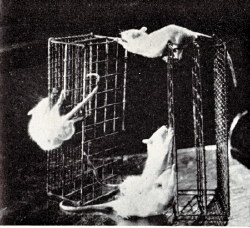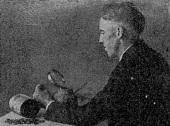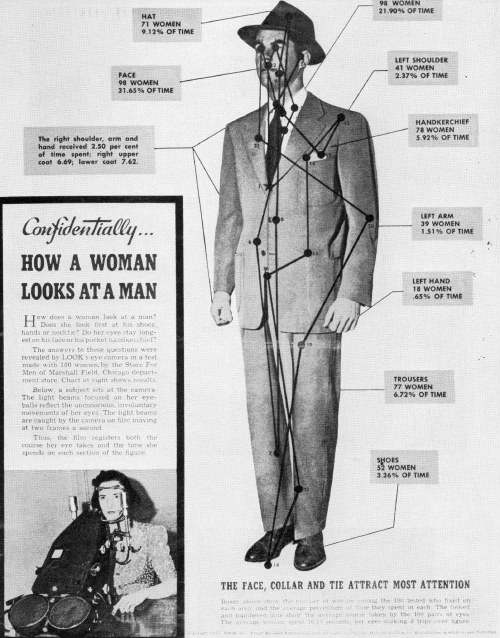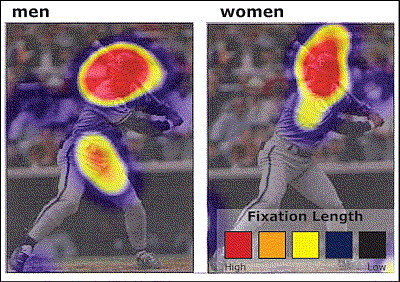Experiments
Catatonic Rats
Old science books and articles are a great source of weird images. For instance, I found the two pictures below in Of Mice, Men and Molecules by John Heller (published in 1960). The images are titled "Catatonic rats" and have this explanatory caption:Unfortunately, Heller doesn't reveal what the chemical is that caused the rats to freeze in these positions. My guess is that it's LSD.
 |  |
Posted By: Alex - Mon Aug 18, 2008 -
Comments (3)
Category: Animals, Drugs, Science, Experiments
The Smoke-Filled Room
If you were sitting in a waiting room and smoke began to billow out of a vent in the wall, you'd probably do something about it. At least, you'd report the problem to someone. Or maybe not.In a famous experiment conducted by John Darley and Bibb Latané during the 1960s, Columbia University students were invited to share their views about problems of urban life. Those who expressed an interest in participating were asked to first report to a waiting room in one of the university buildings where they would find some forms to fill out before being interviewed. They had no idea that the urban-life study was just a cover story. The real experiment occurred in the waiting room.
As they filled out the forms, smoke began to enter the room through a small vent in the wall. By the end of four minutes, there was enough smoke to obscure vision and interfere with breathing. Darley and Latané examined how the students reacted to this smoke in two different conditions.
In the first condition, the students were alone. When this was the case, they invariably investigated the smoke more closely and then went out into the hallway to tell someone about it.
But in the second condition, the students were not alone. There were two or three other people in the room, who were secret confederates of the researchers. They had been instructed to not react to the smoke. They would look up at it, stare briefly, shrug their shoulders, and continue working on the forms. If asked about it, they would simply say, "I dunno."
In this setting, according to Darley and Latané, "only one of the ten subjects... reported the smoke. the other nine subjects stayed in the waiting room for the full six minutes while it continued to fill up with smoke, doggedly working on their questionnaires and waving the fumes away from their faces. They coughed, rubbed their eyes, and opened the window -- but they did not report the smoke."
That's the power of group pressure.
If you ever get the chance, check out Darley and Latané's book The Unresponsive Bystander: Why Doesn't He Help? It's not easy to find because it's out of print, but it's full of strange experiments like the smoke-filled room one.
Also check out this youtube video based on the smoke-filled room experiment. It's not the original study, but a later replication of it.
Posted By: Alex - Thu Aug 14, 2008 -
Comments (0)
Category: Science, Experiments, Psychology
Dogs Catch Human Yawns
I imagine that many dog owners have noticed that dogs can "catch" yawns from humans, and vice versa (I think). So was an experiment to verify this really necessary? The animal behaviorists at the University of London evidently thought so. In their defense, I'd argue that just because something seems obvious, it still might yield interesting results when examined under controlled conditions in a laboratory setting. From the Aug 2008 issue of Biology Letters:The BBC has a video of a yawning dog -- making me sleepy! (Thanks, Sandy!)
Posted By: Alex - Sun Aug 10, 2008 -
Comments (1)
Category: Animals, Experiments
Bizzare Experiments

But eagle-eyed reader Rowenna noticed that, on the cover, the word "bizarre" was misspelled. They spelled it "bizzare". Panicked, I ran to check if the actual cover had the same misspelling. (By coincidence, I had just received my copy of the UK edition in the mail.) Thankfully, it was spelled correctly. But then I noticed that the same misspelling occurs on the cover photo on Amazon. I'll have to let my publisher know. I don't think "bizzare" is an alternative UK spelling of "bizarre".
Posted By: Alex - Thu Aug 07, 2008 -
Comments (1)
Category: Science, Experiments, Books, Alex
The Shoelace Experiment

Norbert Elias (1897-1990) was a highly influential sociologist, best known for his two-volume work The Civilizing Process. Among his less well-known accomplishments was his shoelace experiment.
In 1965 and 1966 Elias traveled throughout Europe as a tourist. Deciding to mix sociological research with pleasure, he resolved to find out how people in different countries would respond to him if he left his shoelaces untied. Ingo Moerth summarized the results of this experiment in the June 2007 issue of The Newsletter of the Norbert Elias Foundation:
(2) England - London 1965 (Regent Street, Bond Street): Here Elias conducted three experiments, all of which lasted three hours. He got nine reactions, mostly by older ‘citizens’, as Norbert Elias notes: ‘In England mostly elderly gentlemen reacted by communicating with me on the danger of stumbling and falling’ (in Elias 1967, as translated by Ingo Moerth). This might be interpreted as an established ‘society-context’, where the anonymity is overruled by engaged and experienced citizens watching the public space.
(3) France - Paris 1966 (Champs Elyseés, Boulevard St Michel, Montparnasse): Here Elias conducted three experiments of three hours, but with much less reaction. Only two people communicated directly with him about the visible shoe-lace problem, both sitting in street cafés on the Champs Elyseés, besides a youngster who shouted directly ‘prenez garde’ (‘take care’) into his ear, much to the amusement of the young man’s group of companions. As an explanation of this different reaction, perhaps a different character of ‘public space’ in France may be relevant: mere observation in contrast with engagement and direct intervention, as in London/UK or in Germany (see the following discussion, as cited below).
(4) Germany - for instance Münster 1965: Here the ‘society-context’ mentioned above was – according to Norbert Elias – watched and communicated not by gentlemen, but mostly by women: ‘In Germany older men only looked at me somewhat contemptuously, whereas women reacted directly and tried to ‘clean up’ the obvious disorder, in the tramway as well as elsewhere. Here in most cases a short conversation, comprising more than the obvious ‘shoe-lace disorder’ took place, such as a short warning about what might happen if I didn’t take care of the basic problem’ (in Elias 1967, as translated by Ingo Moerth).
(5) Switzerland: Bern 1966: Here Elias experienced the most elaborate conversation about dangers related to untied shoe-laces, including admonitions about dangers of eating grapes and using trains. He explicitly states: ‘This was probably an exception, from which no conclusion on a Swiss national character can be drawn' (in Elias 1967, as translated by Ingo Moerth).
It would be interesting to conduct this experiment in America. New Yorkers would probably ignore you. In Los Angeles everyone drives, so you'd be lucky if you encountered another pedestrian.
Posted By: Alex - Wed Aug 06, 2008 -
Comments (0)
Category: Fashion, Experiments, Psychology
The White Castle Experiment

However, the idea of conducting a fast-food diet experiment wasn't original to Spurlock. That honor goes to Jesse McClendon, a researcher at the University of Minnesota, who in 1930 fed a volunteer a diet of only White Castle hamburgers for 13 weeks. From the U of M Medical Bulletin:
A willing subject presented himself: Bernard Flesche, a U of M medical student working his way through school. Flesche kept a diary during the ordeal. "He started out very enthusiastic about eating 10 burgers at a sitting," notes his daughter, Deirdre Flesche, "but a couple of weeks into it, he was losing his enthusiasm." His sister frequently tried to tempt him with fresh vegetables, but Flesche allowed nothing but White Castle Slyders™ to pass his lips.
Flesche survived his ordeal without developing any significant health problems. The owner of White Castle interpreted this to mean that a hamburger diet is healthy and heavily promoted the experiment in advertisements. Flesche, however, who had once been a hamburger lover, developed a permanent aversion to them. He never willingly ate a hamburger again.
Posted By: Alex - Mon Aug 04, 2008 -
Comments (0)
Category: Food, Experiments, 1930s
Testing the Law of Probability

Pope R. Hill, a professor at the University of Georgia during the 1930s, wanted to find out. But he thought coin-flipping was too imprecise a measurement, since any one coin might be imbalanced, causing it to favor heads or tails.
Instead, he filled a can with 200 pennies. Half were dated 1919, half dated 1920. He shook up the can, withdrew a coin, and recorded its date. Then he returned the coin to the can. He repeated this procedure 100,000 times!
Of the 100,000 draws, 50,145 came out 1920. 49,855 came out 1919. Hill concluded that the law of half and half does work out in practice.
If you have absolutely nothing better to do, you can head over to Random.org, which hosts a virtual coin toss, and try to outdo Hill by clicking the "flip coin" button 100,001 times. Make sure to record your results. Although I doubt a virtual coin toss would be considered truly random, even though random.org claims their randomness "comes from atmospheric noise, which for many purposes is better than the pseudo-random number algorithms typically used in computer programs."
Posted By: Alex - Thu Jul 24, 2008 -
Comments (0)
Category: Experiments, 1930s
The Cow Whisperer
I suspect cows are going to become a theme here at WU. They're ubiquitous and silly and important. Those are three good criteria for inclusion here. Hey, if cows were good enough for Gary Larson humor, they're good enough for us!The latest news is that they're demanding headphones as they graze! Not sure if iPods are included. Read the article here.
Then watch the video of "The Cow Whisperer" here.
Posted By: Paul - Wed Jul 23, 2008 -
Comments (5)
Category: Agriculture, Food, Science, Experiments, Technology, Cows
Smelly Old People

Do old people produce an unpleasant body odor? In 2001 Japanese researchers conducted an experiment that suggested they do. The researchers had a group of volunteers sleep in the same t-shirt for three nights. According to the New Scientist:
Happily, the case against gramps is not yet proven. Recently researchers at the Monell Chemical Senses Center in Philadelphia conducted similar studies, but detected no unpleasant smells coming from old folks. They suggested the foul odor found in the Japanese study may have been produced by a diet high in fish.
Whether or not the phenomenon of "aging odor" is real (I doubt it), I can't believe the cosmetics industry hasn't picked up on this idea and tried to profit from it. They could come up with a scary, scientific-sounding name for age-related odor (what about Geritosis?), and then roll out a line of products supposedly specially formulated to combat it. With the graying of the baby boomers, they would make a killing.
Posted By: Alex - Tue Jul 22, 2008 -
Comments (2)
Category: Experiments
What do women look at?
One of the earliest eyetracking studies was conducted by the Visual Research Laboratories at Drake University during the 1940s. They used light beams to follow the eyeball movements of women shown a picture of a man. The subjects were all customers at the Marshall Field department store in Chicago. Check out this diagram they produced titled "How a Woman Looks at a Man" (from Look magazine, 1944).
An eyetracking study conducted in 2005 by the Nielsen/Norman Group (described in Online Journalism Review) produced similar results. When shown a photo of baseball-player George Brett, womens' eyes focused on his face. By contrast, when men were shown the same photo, they focused also on his crotch. The researchers noted, "Men tend to fixate more on areas of private anatomy on animals as well, as evidenced when users were directed to browse the American Kennel Club site." (This is one of those factoids that doesn't make me feel proud to be a man.)

But what about less tame material? Of course, science has explored this area as well. A 2007 study funded by the Center for Behavioral Neuroscience analyzed the viewing patterns of men and women shown sexual photographs. Strangely enough, the viewing patterns were not the same as in the earlier studies. From Science Daily:
"The eye-tracking data suggested what women paid most attention to was dependent upon their hormonal state. Women using hormonal contraceptives looked more at the genitals, while women who were not using hormonal contraceptives paid more attention to contextual elements of the photographs," Rupp said.
Posted By: Alex - Mon Jul 14, 2008 -
Comments (0)
Category: Sexuality, Experiments

| Who We Are |
|---|
| Alex Boese Alex is the creator and curator of the Museum of Hoaxes. He's also the author of various weird, non-fiction, science-themed books such as Elephants on Acid and Psychedelic Apes. Paul Di Filippo Paul has been paid to put weird ideas into fictional form for over thirty years, in his career as a noted science fiction writer. He has recently begun blogging on many curious topics with three fellow writers at The Inferior 4+1. Contact Us |




